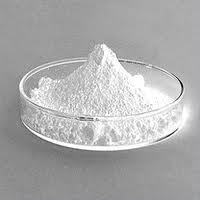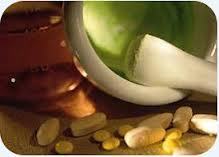Propylene Glycol
5000.0 INR/Kilograms
Product Details:
- Structural Formula CH3-CHOH-CH2OH
- Boiling point 188.2 Centigrade
- Molecular Weight 76.09 Kilograms (kg)
- Storage Room Temperature
- Smell No Smell
- HS Code 29053200
- Shelf Life Years
- Click to View more
X
Propylene Glycol Price And Quantity
- 5000.0 INR/Kilograms
- 25 Kilograms
Propylene Glycol Product Specifications
- Propylene Glycol (PG) is typically used as a liquid and does not have a specific particle size since it is not a solid or powder form. It is a viscous liquid at room temperature, so particle size is not a relevant characteristic for this substance.
- 10 ppm
- -59 C (-74.2 F)
- White crystalline powder or colorless crystals
- Odorless
- Propylene Glycol is highly soluble in water, which is why it is often used in aqueous solutions and formulations
- C3H8O2
- Powder
- 200-338-0
- 0.1% (or very minimal)
- Medicine Grade
- 98%
- Propyl Paraben (Propyl p-Hydroxybenzoate)
- pH: 5.0 to 7.0 (neutral to slightly acidic)
- 76.09 Kilograms (kg)
- Room Temperature
- 188.2 Centigrade
- Years
- 29053200
- While Propyl Paraben is generally considered safe, it may cause allergic reactions in some individuals. Concerns have been raised about its potential estrogenic activity, but current evidence linking parabens to health risks like cancer is considered weak. Despite this, consumer perception has led to increased demand for paraben-free products.
- No Smell
- Pharmaceutical Intermediates
- Propylene Glycol
- CH3-CHOH-CH2OH
Propylene Glycol Trade Information
- INDIA
- Cash Against Delivery (CAD), Cash Advance (CA), Cash in Advance (CID), Delivery Point (DP)
- 1000 Kilograms Per Day
- 7 Days
- No
- Free samples are available
- DRUM
- Western Europe, Australia, Central America, North America, South America, Eastern Europe, Middle East, Africa, Asia
- All India
- WE PROVIDES ALL KIND OF CERTIFICATIONS AS YOU REQUIRED
Product Description
Propylene glycol is a viscous, odorless, stable and colorless fluid with a slightly sweet, acidic taste. There is no problem mixing it with water, acetone, chloroform and other organic solvents. It can also dissolve essential oils, dyes as well as resins. This is a synthetic liquid that absorbs water. Polyester compounds are also made with propylene glycol, and solutions for deicing are formulated with this chemical. In the chemical, food, and pharmaceutical industries, this hygroscopic liquid is used as an antifrost when leakage could result in contact with food.
Properties
- CAS ID: 57-55-6
- Synonyms: 1,2-dihydroxypropane, 1,2-propanediol, methyl glycol, and trimethyl glycol
- Molecular Formula: C3H8O2
- Molecular Weight: 76.10
- Assay: Not less than 99.5%
- Description: Clear, colourless, hygroscopic, viscous liquid
- Solubility: Soluble in water, ethanol and acetone
- Heavy metals: Not more than 10 mg/kg
- Boiling point: 188.2 Degree C
- Melting point: -59 Degree C
How does it work:
A low concentration of propylene glycol serves as a humectant. It is responsible for holding the water and transferring it to the outer layer of your skin. Propylene Glycol is, therefore, a good ingredient in any cosmetic or personal care product for hydrating your skin and resolving your dryness and dullness issues with the skin.
Applications Or where it is used:
Various medicines, cosmetics, and food products use it to maintain moisture. The solvent is used in the paint and plastics industries as well as for food colors. Also, propylene glycol is used to create artificial smoke and fog to be used in firefighting training and in theater productions.
The main applications of propylene include polypropylene plastics for injection molding and fiber production, as well as cumene (which is used to produce phenol). Additionally, propylene is used to make acrylic acid, oxo alcohols, and isopropanol.
Manufacturing process:
This odorless, tasteless, colorless, somewhat syrupy fluid can be derived from petroleum, natural gas, or vegetable sources.
The synthetic food additive propylene glycol is a member of the same chemical group as alcohol. Propylene glycol is manufactured commercially by hydrating propylene oxide. MPG formation is easier with controlled water. Distillation is used to separate the various glycols from the dehydrated reaction mixture by evaporation.
How to use:
Certain medicines, cosmetics, or food products use it to absorb extra moisture. Many foods, including ice-cream, beverages, and a variety of breads, contain propylene glycol. Its ability to hold moisture and its sweet taste make propylene glycol a popular ingredient. Non-irritating, low volatility, and acts as an emulsifier, it is an excellent choice.
Side effects:
Seizures and severe neurological symptoms have been associated with propylene glycol. Additionally, strange sensations, nausea and vertigo have been reported. There can be some adverse effects of this product, for instance cardiac arrhythmia, central nervous system (CNS) toxicity, seizures, agitation, hyperosmolarity, hemolysis, and lactic acidosis. Over time, using the e-cigarettes with PG and VG e-liquid refills may lead to inflammation of the lungs.
Warnings and precautions while using this product:
Propylene-based cosmetics may worsen skin conditions such as eczema. If you are new to the product, test a little on your arms before you use it regularly. In case you are allergic or do not like the ingredient, discontinue using it. Studies have shown this ingredient may develop some irritation after repeated application to the eye and nasal area.
Tell us about your requirement

Price:
Quantity
Select Unit
- 50
- 100
- 200
- 250
- 500
- 1000+
Additional detail
Mobile number
Email






 : nilesh.sheth70
: nilesh.sheth70
